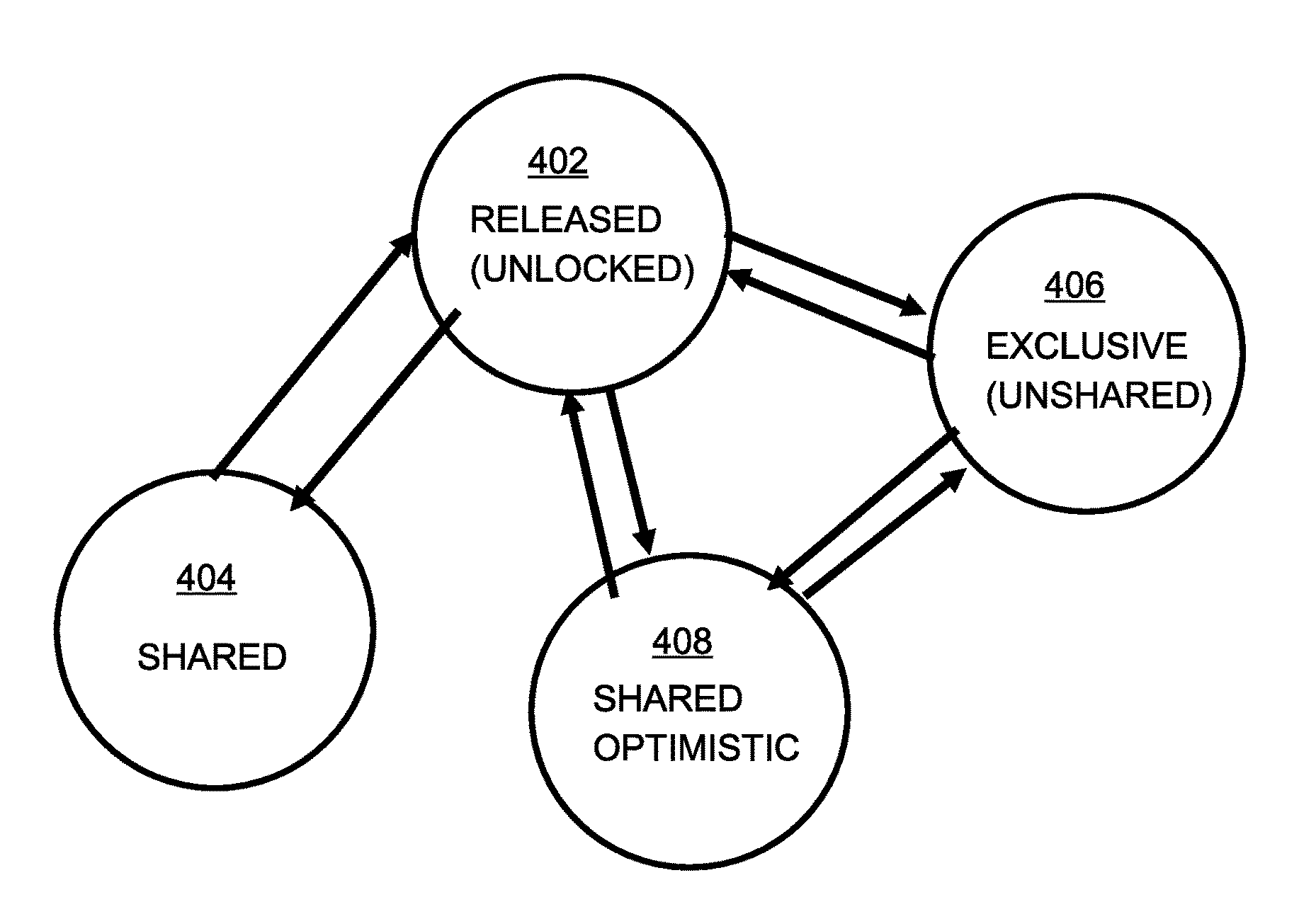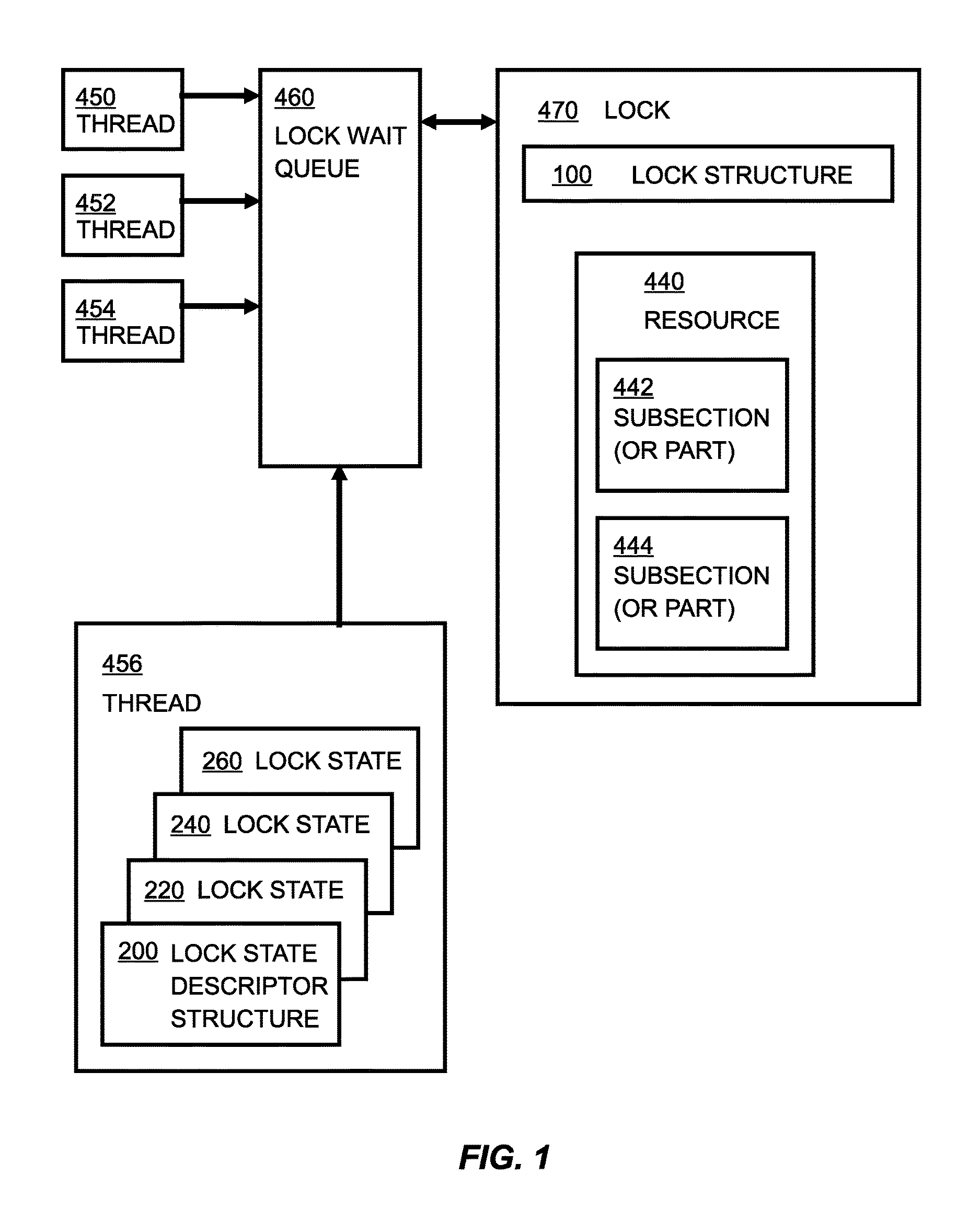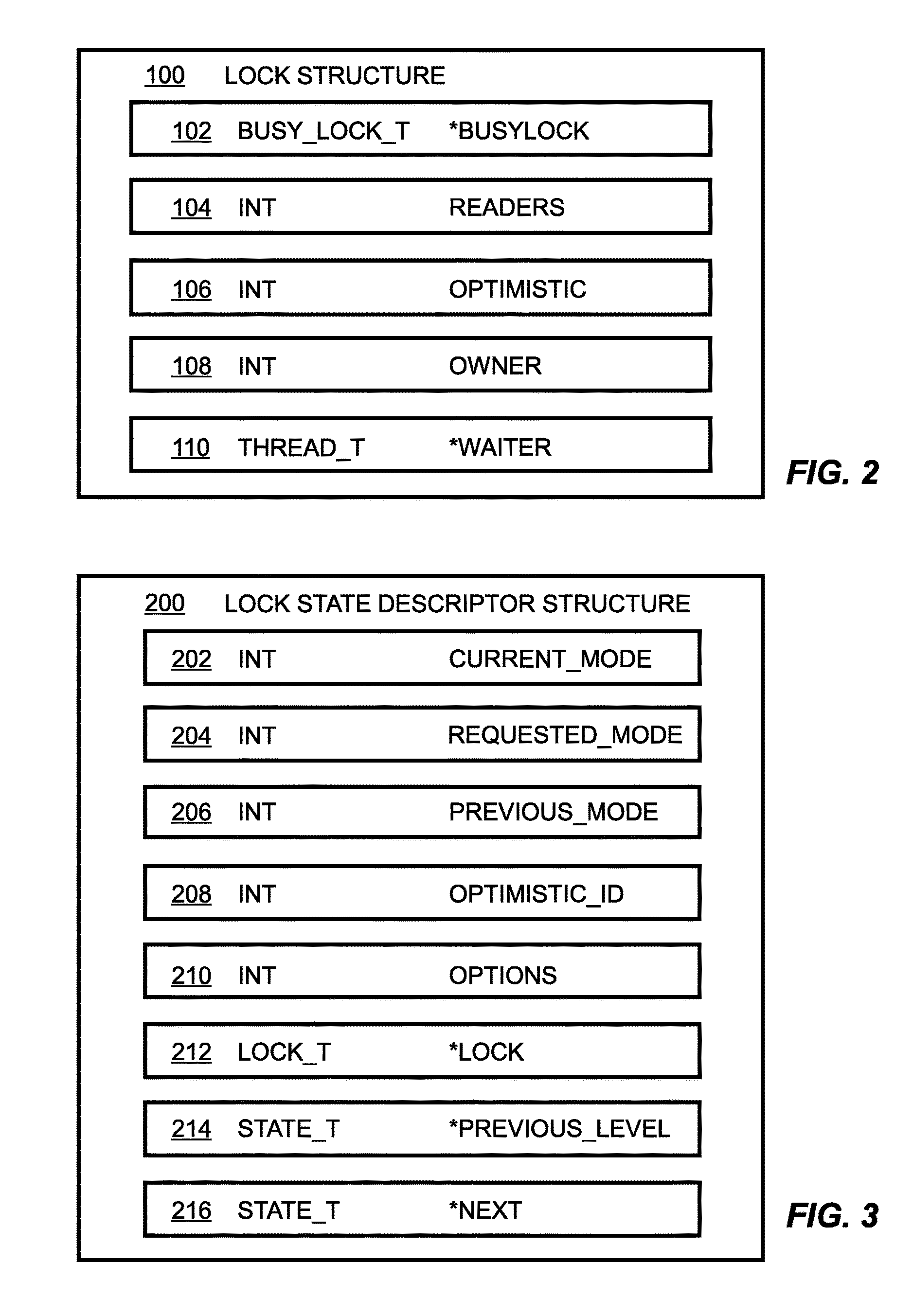Reentrant read-write lock algorithm
a lock algorithm and read-write technology, applied in the field of read-write lock algorithms, can solve the problems of stalling on itself, substantial performance penalty, and relockable read-write mutexes offering no advantage over plain read-write lock mutexes, so as to avoid further contention and avoid infinite loops of threads
- Summary
- Abstract
- Description
- Claims
- Application Information
AI Technical Summary
Benefits of technology
Problems solved by technology
Method used
Image
Examples
Embodiment Construction
[0042]Embodiments of the invention provide a shared lock so as to take advantage of parallelism in operations such as check-reloads, independently of any code reutilization issues being addressed. These embodiments provide a reentrant lock infrastructure that allows code to be reutilized while maintaining lock states consistent with the operation being performed.
[0043]Embodiments of the invention provide a new lock that adds a fourth state to read-write locks, referred to hereinafter as a Shared Optimistic state. The behavior of such a lock is as described below.
[0044]When the lock is in the unlocked state, any thread can acquire it in any of the other modes.
[0045]When the lock has been acquired in shared mode by one or more threads, other threads can still acquire the lock in shared or optimistic mode, providing parallel read operations. Threads wishing to acquire the lock in exclusive mode will have to wait for the current readers (in either shared or optimistic mode) to release t...
PUM
 Login to View More
Login to View More Abstract
Description
Claims
Application Information
 Login to View More
Login to View More - R&D
- Intellectual Property
- Life Sciences
- Materials
- Tech Scout
- Unparalleled Data Quality
- Higher Quality Content
- 60% Fewer Hallucinations
Browse by: Latest US Patents, China's latest patents, Technical Efficacy Thesaurus, Application Domain, Technology Topic, Popular Technical Reports.
© 2025 PatSnap. All rights reserved.Legal|Privacy policy|Modern Slavery Act Transparency Statement|Sitemap|About US| Contact US: help@patsnap.com



